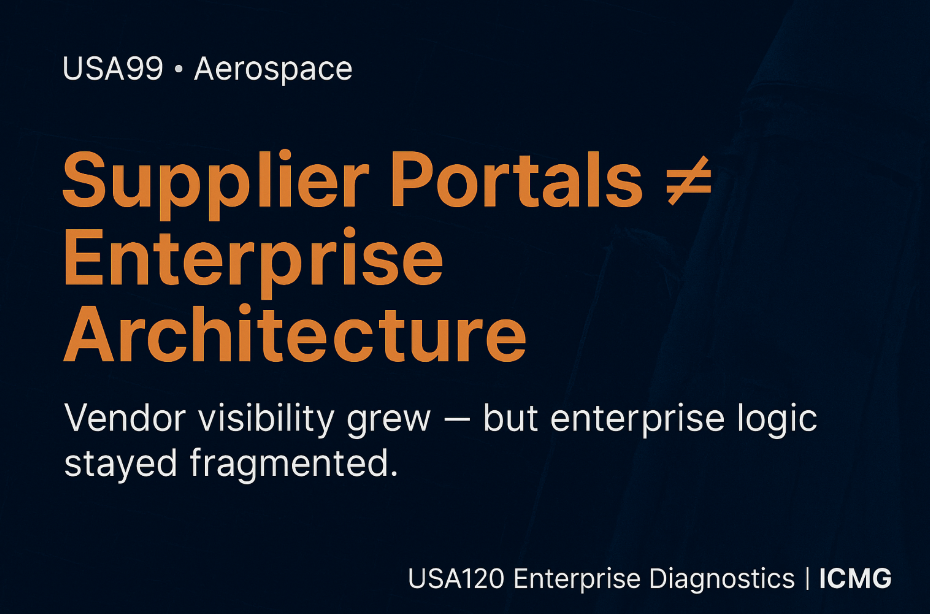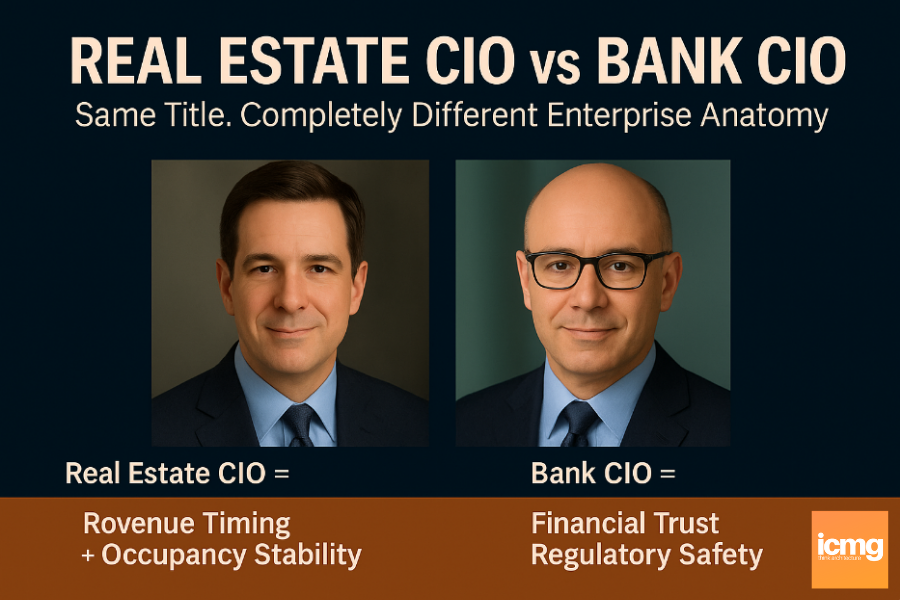Case USA99: How a Commercial Space Launcher Recast Supplier Portals as Enterprise Architecture
- Sunil Dutt Jha

- Aug 19
- 2 min read
Updated: Nov 3
Overview:
This case is part of a 100-diagnostic series revealing how private aerospace companies have mislabeled procurement tools as “Enterprise Architecture progress.”
In the commercial space sector, a recurring pattern is treating supplier onboarding portals as proof of architectural maturity.
Vendor registration became faster, documentation was centralized, and compliance checks improved — yet the enterprise structure linking engineering design, manufacturing, quality assurance, launch readiness, and regulatory coordination was never modeled.

P1–P6 Insight Preview:
These six perspectives define how an enterprise connects intent to execution — P1: Strategy, P2: Business Processes, P3: System Behaviors, P4: Component Governance, P5: Implementation, P6: Business & Technology Operations.
P1 (Strategy): Supplier portals were justified as supply chain optimization, but no architecture-led plan tied them to reducing launch risk, improving part reliability, or shortening mission timelines.
P2 (Process): Vendor onboarding was standardized, but change control, non-conformance handling, and readiness checks remained fragmented.
P3 (System): Portals weren’t behaviorally integrated with PLM, ERP, QMS, and launch scheduling systems.
P4 (Component): Part specifications, certifications, and test data were governed independently across engineering and procurement teams.
P5 (Implementation): Portal features were prioritized for ease of use, while cross-program data reuse and integration were postponed.
P6 (Operations): Business ops could onboard suppliers faster, but tech ops manually validated documentation and quality data before launches.
Stakeholder Impact Summary:
CEO/Launch Company President – accountable for mission success and profitability: Limited by weak P1 Strategy — supplier speed improved, but quality and readiness metrics remain inconsistent.
CIO – responsible for engineering and supply chain system integration: Impacted by P3 System Behaviors and P4 Component Governance — systems operate in silos, creating bottlenecks in readiness checks.
Sales Head (Government & Commercial Contracts) – manages customer delivery timelines: Affected by P2 Processes and P5 Implementation — can promise mission dates, but supplier issues still derail schedules.
Chief Enterprise Architect – ensures the operating model connects engineering, procurement, and operations: Confronts P1–P6 issues — the supplier portal is a tool without an enterprise integration strategy.
Head of Supply Chain Operations – manages part readiness and launch integration: Feels P2, P3, & P6 — must manually reconcile supplier data with engineering and launch readiness systems.
Want to read more?
Subscribe to architecturerating.com to keep reading this exclusive post.




